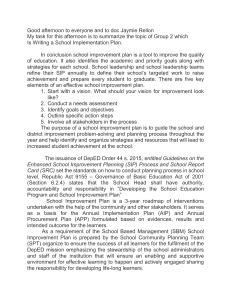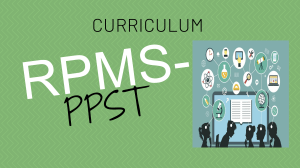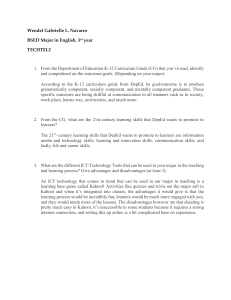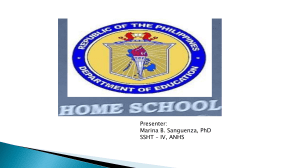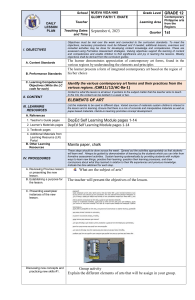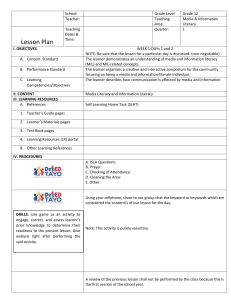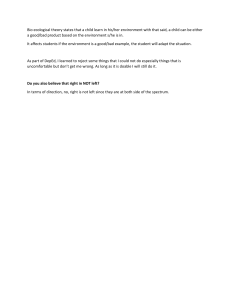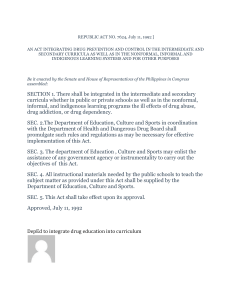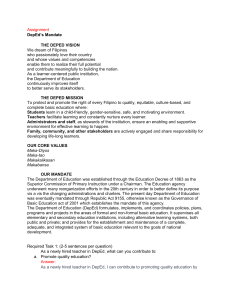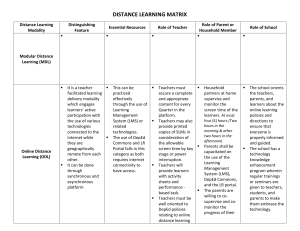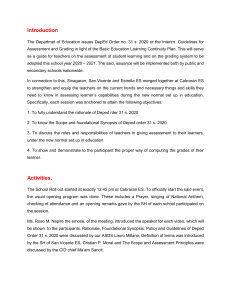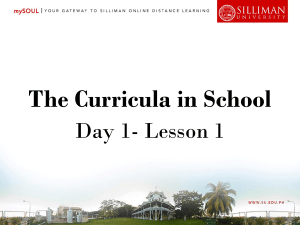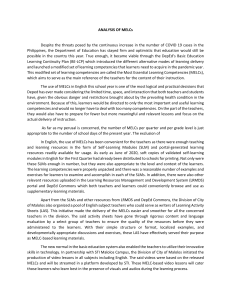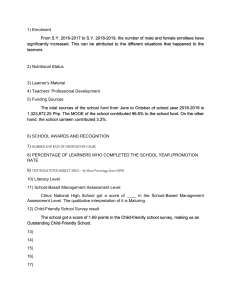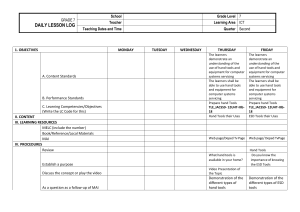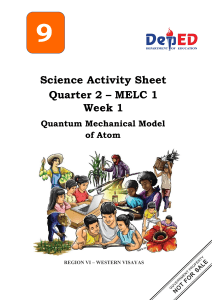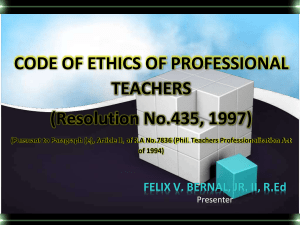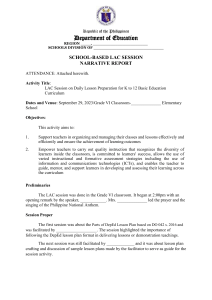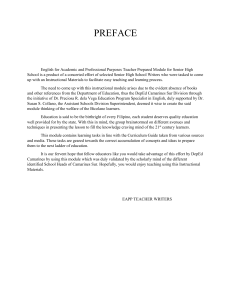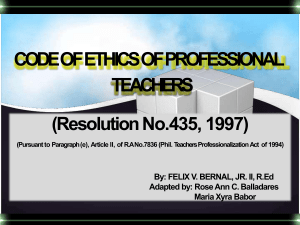4th-lecture-on-cds1
advertisement
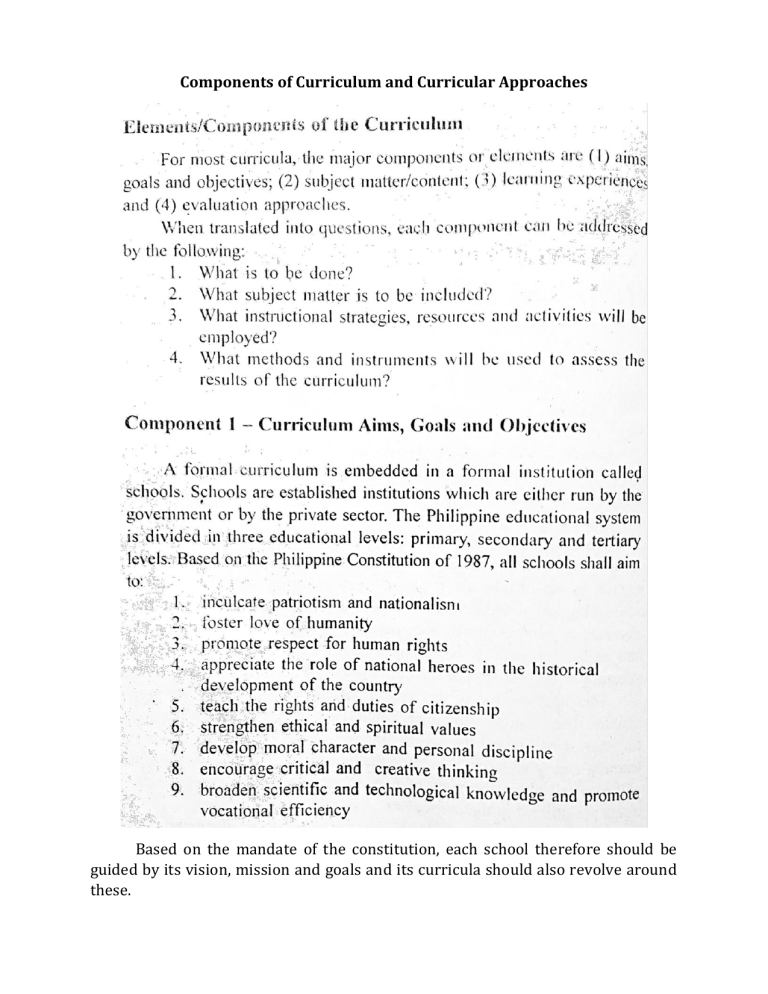
Components of Curriculum and Curricular Approaches Based on the mandate of the constitution, each school therefore should be guided by its vision, mission and goals and its curricula should also revolve around these. The school’s vision is a clear concept of what the institution would like to become in the future. It provides the focal point or unifying element according to which the school staff, faculty, students perform individually or collectively. It is the guiding post around which all educational efforts including curricula should be directed. The school’s vision can be very ambitious but that is a characteristic of a vision. The school’s mission statement, spells out how it intends to carry out its vision. The mission targets to produce the kind of persons the students will become after having been educated over a certain period of time. Examples of vision and mission: The DepEd Vision We dream of Filipinos who passionately love their country and whose values and competencies enable them to realize their full potential and contribute meaningfully to building the nation. As a learner-centered public institution, the Department of Education continuously improves itself to better serve its stakeholders. The DepEd Mission To protect and promote the right of every Filipino to quality, equitable, culturebased, and complete basic education where: - Students learn in a child-friendly, gender-sensitive, safe and motivating environment - Teachers facilitate learning and constantly nurture every learner - Administrators and staff, as stewards of the institution, ensure an enabling and supportive environment for effective learning to happen - Family, community, and other stakeholders are actively engaged and share responsibility for developing life-long learners In a curriculum, the goals are made simple and specific for the attainment of each learner. These are called educational objectives. Benjamin Bloom and Robert Mager defined educational objectives in two ways: 1. Explicit formulations of the ways in which students are expected to be changed by the educative process, and 2. Intent communicated by statement describing a proposed change in learners. In other words, objectives direct the change in behavior which is the ultimate aim of learning. They provide the bases for the selection of learning content and learning experiences. They also set the criteria against which learners will be evaluated (Bilbao, et. al., 2008). Activity No. 6 Get a copy of the written lesson plan in the elementary or secondary. Add this to your portfolio. Read every detail of the lesson plan and specifically look into the following: 1. 2. 3. 4. 5. What are the objectives of the lesson plan? What is the subject matter content? What strategies or methods of teaching are utilized? What evaluation procedure is used? Do the four components fit or match with one another? Explain? For your journal/reflection: Can you consider a lesson plan a curriculum? Why? Activity No. 7 Using the curriculum guide of the subject that you have, write the subject matter or learning contents for every quarter per grade level. Explain/justify if the criteria for the selection of learning content are met.
